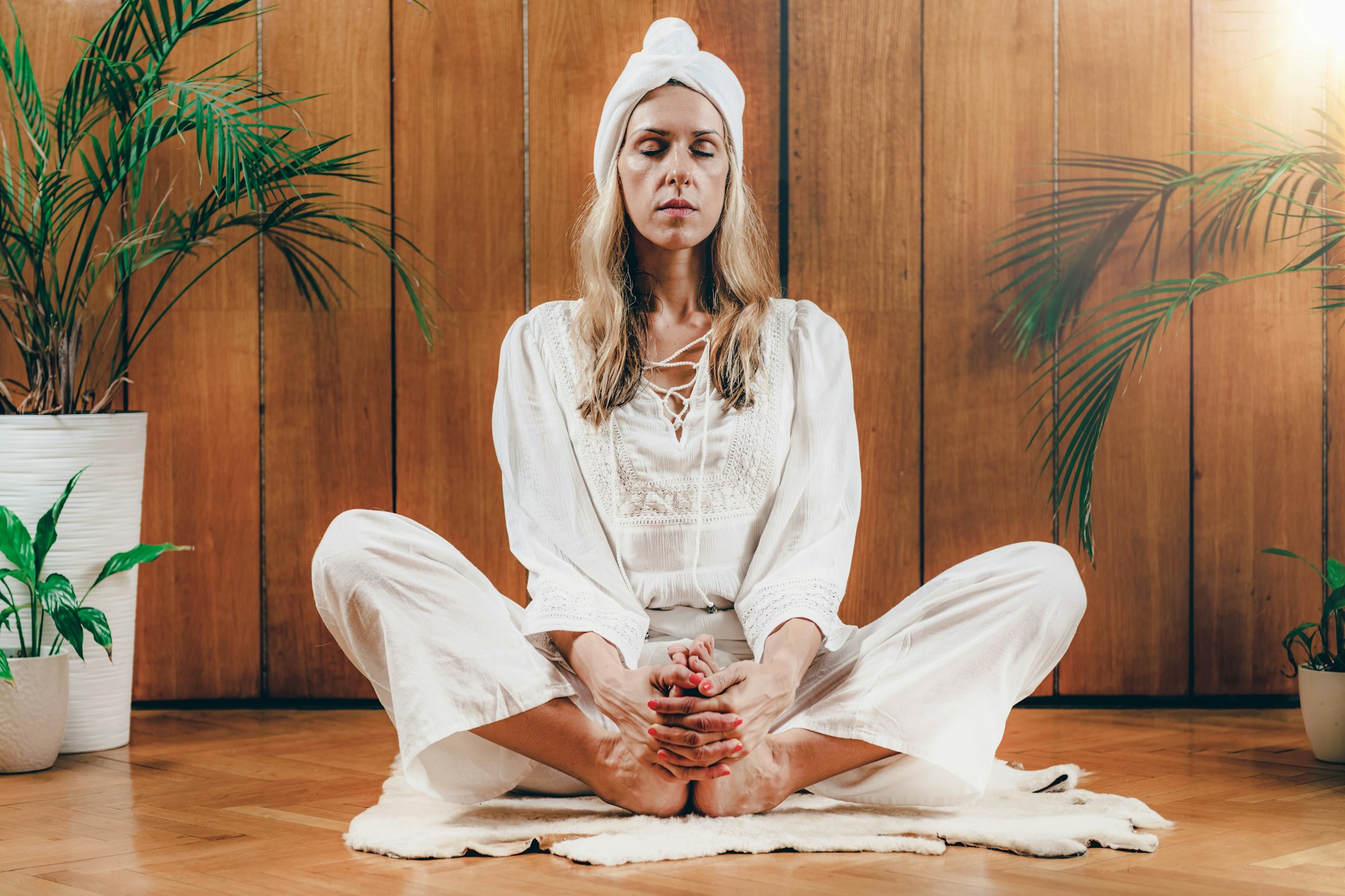Kundalini meditation is a transformative practice designed to awaken the dormant kundalini energy that resides at the base of the spine. Rooted in yoga and ancient spiritual traditions, this meditation focuses on aligning and energizing the chakras, leading to heightened awareness, personal growth, and a deeper connection to your full potential.
For those new to meditation, kundalini meditation offers a structured yet accessible approach, with guided meditation options available to ensure proper technique and guidance.
What is Kundalini Meditation?
Kundalini meditation is a spiritual practice that combines breathwork, chanting, movement, and focus to activate and guide the flow of kundalini energy through the body’s energy centers (chakras). This awakening can result in a powerful experience, offering insights, emotional release, and heightened states of consciousness.
Key Elements of Kundalini Meditation
- Chakra Activation: Focuses on the seven main chakras to balance energy.
- Breathwork (Pranayama): Controlled breathing to regulate energy flow.
- Mantras and Chants: Use of Sanskrit phrases for focus and vibration.
- Mudras: Specific hand positions to direct energy flow.
- Meditation Techniques: Combining posture, breath, and sound to achieve alignment.
The Basics of Kundalini Yoga and Meditation
1. Kundalini Yoga as a Foundation
Kundalini yoga forms the basis of kundalini meditation, offering a blend of physical postures, breathwork, and chanting to prepare the body and mind.
- Poses to Start With:
- Cat-Cow Pose: For spinal flexibility.
- Easy Pose with Breathwork: To center the mind.
- Cobra Pose: To awaken the spine.
- Sequences and Meditation Are Inspired by the teachings of Yogi Bhajan, whose practices emphasize holistic well-being.
How to Practice Kundalini Meditation
Step-by-Step Guide
- Prepare Your Space:
- Choose a quiet and sacred space for meditation.
- Play meditation music for a peaceful ambiance.
- Use cushions or blankets to sit comfortably.
- Tune In:
- Begin with the mantra “Ong Namo Guru Dev Namo” to align yourself with divine guidance.
- Focus on Breath:
- Practice breathing techniques like long, deep breaths or Kundalini Kriya sequences.
- Use breath of fire to energize the body.
- Chakra Meditation:
- Visualize energy rising from the base of your spine to the third eye.
- Chant or repeat affirmations to align the chakras.
- Mantras and Mudras:
- Incorporate hand gestures (mudras) like Gyan Mudra for focus.
- Chant mantras to deepen concentration.
- Close Your Eyes and Meditate:
- Let your awareness flow inward, observing your thoughts without judgment.
- Focus on the kundalini awakening as energy moves through your body.
Tips for Beginners
- Start with guided meditation for kundalini awakening to ensure proper form and focus.
- Seek out instructors like Kia Miller or Guru Singh for online guidance or live classes.
- Use meditation apps for structure and daily practice reminders.
Kundalini Awakening for Beginners
Awakening the kundalini energy is a profound and life-changing experience. For those just starting, gradual practice is essential to avoid overwhelm.
What You Need to Know
- The process is unique person to person, and you may experience a mix of physical sensations and emotional shifts.
- Common Signs:
- Tingling sensations or warmth along the spine.
- Intense emotional release or sudden clarity.
- Increased awareness and intuition.
- Best Results: Practice regularly and consult your physician before taking on any new fitness regime, especially if you’re incorporating intense physical elements.
Key Teachers and Resources
Renowned Teachers
- Kia Miller: Offers practical and modern approaches to kundalini practices.
- Guru Singh: Focuses on spiritual awakening and personal growth.
- Alan Finger and Anodea Judith: Experts in chakra meditation and energy healing.
Online Resources
- YouTube Channels:
- Subscribe to practitioners who upload original content and provide guided kundalini meditation videos.
- Channels like Brett Larkin Yoga feature sequences and key moments to deepen your practice.
- Apps and Platforms:
- Use apps for guided meditation to support consistent practice.
- Look for features like transcripts, mantra guidance, and detailed descriptions.
Benefits of Kundalini Meditation
Physical and Emotional Benefits
- Relaxes the nervous system, reducing stress.
- Enhances flexibility and strength through kundalini yoga poses.
- Promotes emotional release and healing.
Spiritual Awakening and Growth
- Encourages self-awareness and connection to the true self.
- Helps align the chakras for balanced energy flow.
- Deepens your understanding of personal growth and purpose.
Common Challenges and How to Overcome Them
Feeling Overwhelmed
- It’s normal to feel unsure if you’re new to meditation. Start slow and seek guidance.
Physical Discomfort
- Adjust your pose or add support with props.
Staying Consistent
- Set a regular schedule, and subscribe to my channel for weekly videos to keep you motivated.
Kundalini Meditation and Personal Transformation
Kundalini meditation offers a pathway to achieve inner peace, connect with your true self, and unlock your full spiritual potential. Through regular practice, you’ll experience profound shifts in consciousness and emotional well-being.
Begin your journey today, guided by the wisdom of teachers like Kia Miller, Guru Singh, and others who have paved the way for modern practitioners. Whether you’re exploring kundalini awakening for beginners or deepening an established practice, this sacred journey promises transformation and self-discovery.







